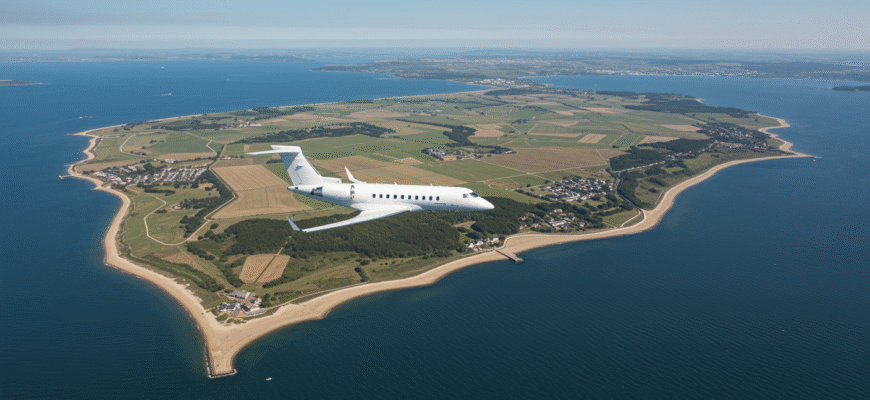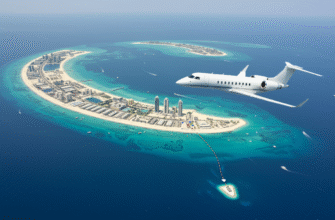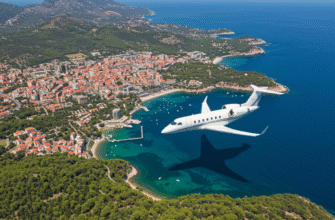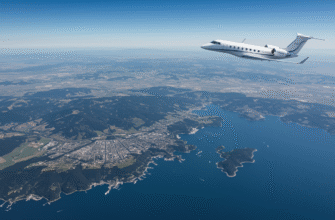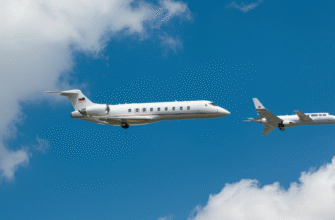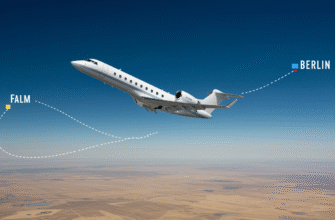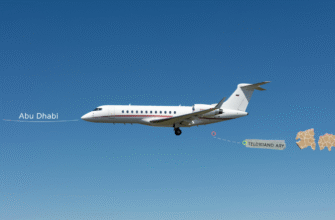Not every private flight route is about champagne and skyline selfies. Take Bristol to Barrow Walney Island, for example. It’s not flashy, and it’s definitely not the route that shows up on influencers’ highlight reels. But for people who need to move quietly, effectively, and without the baggage of airport crowds, this one connects some serious dots. It cuts right across England, linking two places most commercial airlines don’t even whisper about. And yet—for engineers heading to offshore wind facilities, defense players eyeing BAE Systems, or execs whose work touches coastal infrastructure—it’s often the only route that makes sense.
There’s a certain kind of traveler who books this flight: people with jobs to do, not appearances to maintain. Most charter flights on this corridor come in under the radar, pun fully intended. No terminals packed with passengers, no press awaiting arrivals. The airstrip on Walney Island is quiet enough to hear the sea from the cockpit, and most people flying in or out prefer it that way. This isn’t about luxury—it’s about access.
What Makes The Bristol–Barrow Walney Island Route So Valuable
This flight exists because some industries demand movement that isn’t slow, seen, or stuck in train strikes. Barrow Walney Island may not ring bells for tourists, but it matters in defense, offshore, and advanced manufacturing. Fast connections between BRS and BWF are all about function—getting the right people to the right corner of England, without delays or eyes.
- Defense contractors frequently use this route to reach shipbuilding infrastructure or classified projects at nearby facilities.
- Offshore wind energy engineers rely on it to access coastal wind farms and marine operations bases.
- Executives from specialized sectors—think undersea cabling, naval design—book private flights to stay mobile and invisible.
No screaming kids. No airport lounges with mood lighting. Just a short hop across England, delivering people into the gritty edge of British industrial precision. There’s something oddly poetic about flying above fog-drenched fields, then landing on a sea-lashed strip that’s twenty minutes from a submarine yard.
Flight Time, Aircraft Options, And Cost Breakdown
Don’t blink or you’ll miss it. The typical flight between Bristol Airport (BRS) and Barrow Walney Island (BWF) clocks in between 45 and 55 minutes. The exact time varies based on the aircraft type and wind conditions, but it’s hands-down one of the quickest ways to bypass England’s rougher travel delays—especially if you’ve tried getting to Cumbria by train.
The road route is a twisted mess of rural traffic, and you’d be counting potholes by the dozen when driving. This flight, though short, is a powerhouse of convenience.
| Aircraft Type | Passenger Capacity | Typical Use |
|---|---|---|
| Light Jets (e.g., Citation Mustang, Phenom 100) | 4–6 | Solo execs or small teams |
| Turboprops (e.g., King Air 200) | 6–9 | Field engineers and equipment |
| Very Light Jets | 4 | Point-to-point hops |
As for costs:
- One-way solo private charter: £3,000–£4,500, depending on aircraft and day/time
- Round trip same day return: Slight discount—closer to £6,000 flat
- Shared charter seats: Rare but doable, averaging £900–£1,200 per seat if you find other flyers
Now, here’s the hidden gem: empty leg flights. Cardiff, Manchester, Liverpool, and even London Luton occasionally reposition aircraft toward Bristol or Barrow, and these “deadhead” stretches can transform into ultra-cheap options if you jump on them fast. The catch? You adapt to the plane’s schedule, not yours.
Turboprops dominate this corridor, mainly due to shorter runway requirements at Barrow. The landing strip, hugging the edge of the Irish Sea, demands precision. On blustery days, pilots earn their money handling crosswinds and brutal visibility drops. But they get you there far faster—and less rattled—than any ferry or train ever will.
The Appeal Of Flying Private To BWF
What makes someone drop several thousand pounds on a 50-minute flight? Simple: control. Most of the folks using this route have neither the time nor patience to gamble with the UK’s public transportation weirdness. Trains get delayed, roads flood, strikes disrupt ferry lines. None of that touches you when you’re walking onto a waiting jet with your duffel bag and one colleague in tow.
Flying private means:
- No security lines—you arrive, show ID, and board directly
- No checked luggage drama—bring tools, gear, even samples with zero hassle
- No wasted minutes—wheel up maybe 15 minutes after arriving airside
From Bristol’s relatively relaxed customs to Barrow’s almost ghost-town landing experience, the journey is more about fluidity than flash.
Some business flyers hop in just long enough to inspect a site and make tweaks on the ground before flying back before dusk. Others use it to disappear for a weekend—no snooping tabloids, just wind-whipped cliffs and sealed briefcases.
This isn’t a red carpet flight. It’s low-key transport for high-focus people. People who’d rather fly straight into Cumbria’s wild heart than answer texts on a 6-hour train from the south.
Barrow Walney Island Airport: No-Frills, High Function
Forget champagne lounges and sprawling terminals. Barrow Walney Island Airport doesn’t do frills—and that’s exactly the point. Tucked onto the edge of Walney Island, this flight destination is ex-RAF, barely staffed, and secured with the kind of discretion that just doesn’t exist in the rest of aviation.
There’s no proper terminal to speak of—just an airstrip kissed by salty wind. You land. You unload. Then you’re gone. Most times, there’s no one else on site except a few ground crew who moonlight as customs agents and security as needed.
The single runway stretches shockingly close to the sea, just a few meters above sea level. If you’re not watching closely, it feels like you might land right into the waves. Pilots who frequent this route are used to the kind of crosswinds that flip umbrellas inside out. It’s rugged. Real. And completely private.
- Fast facts: No commercial service, zero queues, and sometimes no other jets arriving that day. You might step off the plane into total silence.
Immediate surroundings? Salt marshes, industrial shadows of Furness, and wind that’s felt in the bones. And yet, there’s something striking about standing at the edge of Cumbria on a remote runway where nothing is designed to impress—just work. That first breath of marine air? Surreal. Like you’ve arrived in a place that forgot it was part of the UK.
Who Actually Flies This Route — and Why It Stays Under the Radar
Let’s be real—this isn’t a vacation route. Most people hopping between Bristol and Barrow aren’t sipping rosé at altitude. They work in deep-sea cable laying, wind energy operations, or with BAE Systems, just across the bridge.
Projects in Barrow deal with future-proofing infrastructure, defense, and marine tech that never hits mainstream headlines. Some of the sites are government-restricted, shielded not just by walls but geography. If someone’s catching this jet, they’re likely not trending on celebrity news.
There’s also the occasional VIP who wants to slip in and out of Cumbria without going through Heathrow or spotlight-heavy locations like Farnborough. For them, Barrow is the quietest entrance nobody’s clocking. It’s point-to-point travel with no conversation in between.
The Strategic Sweet Spot: Access Without Attention
Here’s where it gets interesting. In a world of flight tracking and tabloid airports, Barrow Walney stands out by staying almost invisible. It doesn’t try to be luxurious. But for execs and specialists needing to keep their movements quiet, this route nails it.
Compared to polished executive airports like Biggin Hill or Farnborough, Barrow looks like an afterthought. But that’s the win. No media waiting beyond the gate, no surrounding hotels filled with overnight crews. Just a trimmed runway, a few watchful eyes, and quick road access to local industry.
- Why they choose this flight: High-level contractors checking on wind farm hubs, engineers reviewing submarine modules, VVIPs with reasons not to be seen.
Weekend check-ins to shipyard-linked projects are common. Some flights are practically commuter runs for people who might as well have an office in the sky. You get off the plane, jump into a local cab (roughly £5), and reach BAE’s facilities before your coffee’s cooled. No crowds. No terminal photos. No attention.
For those that know the game, that kind of access? It’s priceless—because nobody else is looking.
